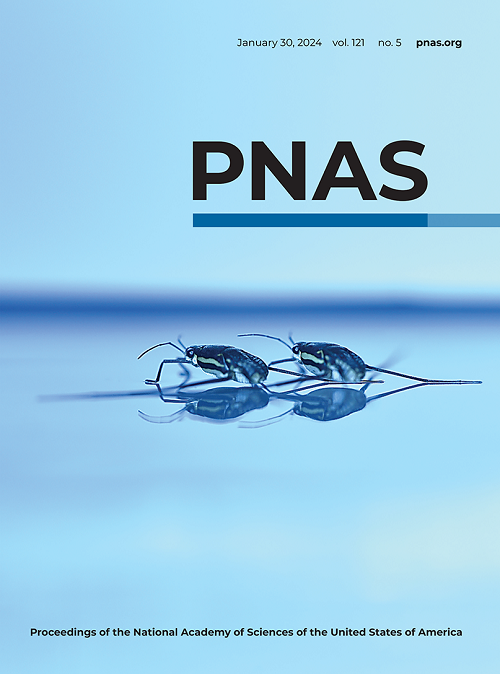Biofilm architecture determines the dissemination of conjugative plasmids
IF 9.4
1区 综合性期刊
Q1 MULTIDISCIPLINARY SCIENCES
Proceedings of the National Academy of Sciences of the United States of America
Pub Date : 2025-04-25
DOI:10.1073/pnas.2417452122
引用次数: 0
Abstract
Plasmid conjugation is a contact-dependent horizontal gene transfer mechanism that significantly contributes to the dissemination of antibiotic resistance among bacteria. While the molecular mechanisms of conjugation have been extensively studied, our understanding of plasmid transfer dynamics within spatially structured bacterial communities and the influence of community architecture on plasmid dissemination remains limited. In this study, we use live-cell fluorescence microscopy to investigate the propagation of the broad host range RP4 conjugative plasmid in生物膜结构决定了共轭质粒的传播
质粒共轭是一种依赖接触的水平基因转移机制,对细菌间抗生素耐药性的传播起着重要作用。虽然共轭的分子机制已被广泛研究,但我们对质粒在空间结构细菌群落中的转移动态以及群落结构对质粒传播的影响的了解仍然有限。在本研究中,我们利用活细胞荧光显微镜研究了大肠杆菌群中具有不同空间组织水平的广宿主范围 RP4 共轭质粒的传播。在高密度的二维细胞单层中,供体和受体之间直接而紧密的接触不仅是必要的,而且足以引发 RP4 质粒转移,确保质粒的最佳传播。在三维成熟生物膜中,新出现的群落结构限制了供体细胞进入高细胞密度区域的能力,从而阻碍了与受体细胞建立直接接触,阻碍了生物膜中的质粒转移。相反,微菌落、早期生物膜和表面覆盖率较低的生物膜则为供体细胞在成熟生物膜中出现的高细胞密度区域留下了开放的进入点,从而促进了质粒转移。这些发现揭示了细菌群落结构在决定质粒传播效率方面的关键作用。
本文章由计算机程序翻译,如有差异,请以英文原文为准。
求助全文
约1分钟内获得全文
求助全文
来源期刊
CiteScore
19.00
自引率
0.90%
发文量
3575
审稿时长
2.5 months
期刊介绍:
The Proceedings of the National Academy of Sciences (PNAS), a peer-reviewed journal of the National Academy of Sciences (NAS), serves as an authoritative source for high-impact, original research across the biological, physical, and social sciences. With a global scope, the journal welcomes submissions from researchers worldwide, making it an inclusive platform for advancing scientific knowledge.

 求助内容:
求助内容: 应助结果提醒方式:
应助结果提醒方式:


